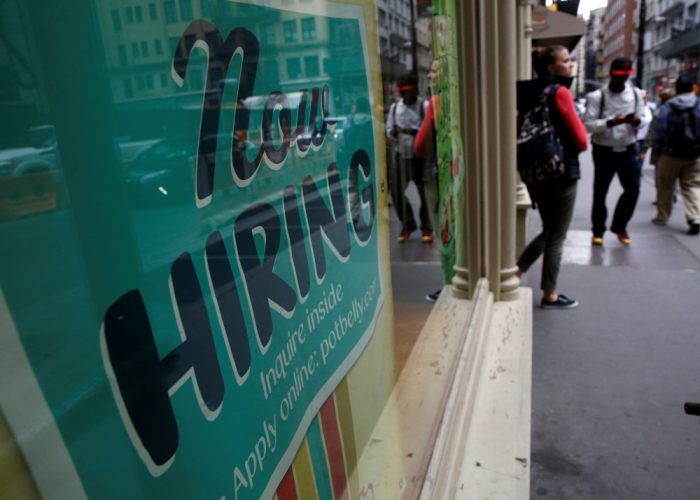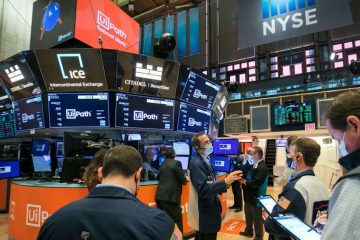Dow Jumps 700 Points After May Jobs Report

For a while, good news about the U.S. economy translated to bad news for the stock market. That dynamic seems to have flipped this week. Major stock indexes climbed Friday on the back of a jobs report that blew past Wall Street expectations, signaling that hiring remains robust even as other data suggests inflation continues to slow. It added momentum to a market already bouncing from Washington’s 11th-hour deal to avert a government default.
The Dow Jones Industrial Average jumped about 2.1% Friday, or more than 700 points, its best session of the year and enough to claw back recent days’ losses to finish the week in the green. The S&P 500 edged 1.5% higher, while the technology-heavy Nasdaq Composite rose 1.1% to its sixth-straight weekly gain and a 52-week high.
May 31June-1.5-1.0-0.500.51.01.52.02.5%Dow industrialsS&P 500
Investors piled into stocks across every industry after the Labor Department on Friday reported that the U.S. created 339,000 jobs in May. For money managers gauging whether the economy is running too hot or too cold, flat wage growth and rising unemployment rounded out a rare instance of Goldilocks jobs numbers. “They could not have been better,” said Jake Remley, senior portfolio manager at Income Research + Management. “The top line was great but the details were also supportive of inflation slowing down.”
Markets have danced with the Federal Reserve for months, parsing economic data that could influence if and when the central bank halts historically fast interest-rate increases that have made it more expensive for businesses and consumers to borrow money. The Friday report was the last monthly jobs snapshot before the Fed’s June meeting. Some officials have indicated that they would support halting rate increases to study how the economy is handling the 10 consecutive increases leading to this point. Wall Street has largely bought that rhetoric: Market odds for a June hike more than halved since last week, to 28% Friday, according to CME Group.
But Friday jobs data also underscored the prospect that if officials do tap the brakes, they could also throttle up again later this summer. Two-year Treasury yields rose to 4.501%, up from 4.339% Thursday, reflecting a greater perceived likelihood that the Fed could decide to raise rates again, or to hold them at high levels for longer than investors expected. Even so, money managers remain mostly unfazed. The Cboe Volatility Index, a measure known as Wall Street’s fear gauge, hit its lowest level on Friday since 2020.
“Investors know we’re in the latter innings of the game” regarding interest-rate increases, said Ronald Temple, chief market strategist at Lazard. “My view of the risk of recession has definitely gone down in the last four to five weeks.” That sentiment has helped shares in banks, which are susceptible to interest-rate changes. The S&P 500 financial sector finished up 2.2%, led by Bank of America’s 3.4% gain and Charles Schwab’s 3.2% increase. The KBW Nasdaq Regional Banking Index, meanwhile, jumped 6.3%.
In individual stocks, shares in athletic-gear maker Lululemon Athletica surged 11.3%, snapping a nine-day losing streak, after the company raised its annual outlook on sales growth in China. Computer manufacturer Dell rose 4% following its report that revenue plunged 20% in the first quarter—but beat expectations. Amazon.com rose 1.2% after Bloomberg News reported that the tech company was considering offering mobile service to Prime subscribers. Shares in Dish Network, which The Wall Street Journal previously reported to be in talks with Amazon to sell coverage, ripped upward by 16%.
Echoing how grocery stocks were creamed when the e-commerce company bought Whole Foods, holders of telecom stocks didn’t like the sound of Amazon encroaching on their territory. AT&T slipped 3.8%, Verizon Communications fell 3.2% and T-Mobile US slid 5.6%. Shares in international oil companies, U.S. fuel refiners, Texas drillers and other energy firms rose alongside oil prices. Benchmark U.S. crude rose 2.3% to $71.74 a barrel, reversing a late-May selloff before groups of oil exporters known as OPEC+ are set to meet this weekend to decide on production levels.
While oil prices have sputtered this year in part because of better-than-expected Russian production and U.S. recession fears, this week’s economic data suggests the American economy continues to chug along. “Seems like people are waiting and waiting for the negative news to come,” said Ben Vaske, investment strategist at Orion Advisor Solutions. “And it just keeps not coming.”










